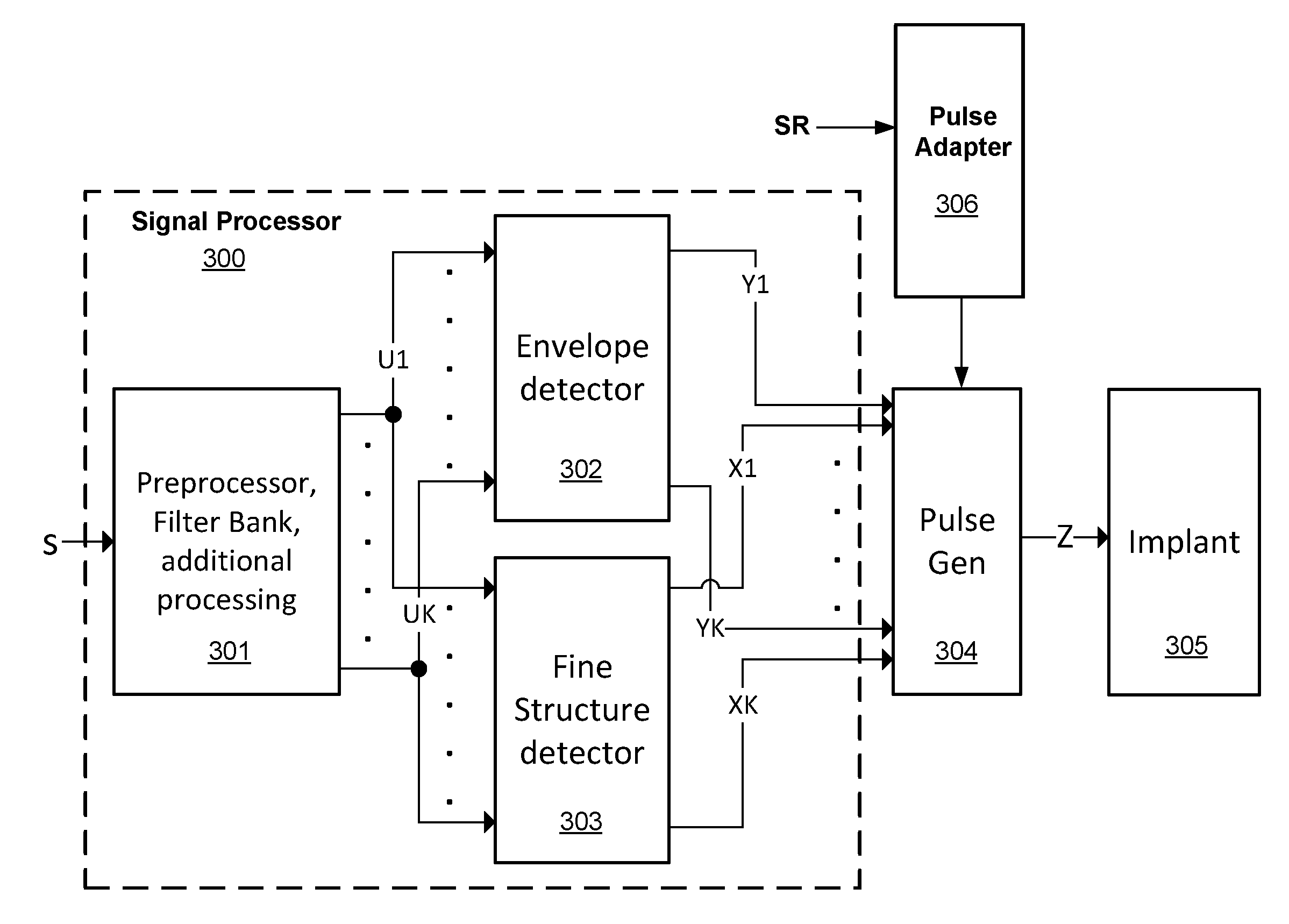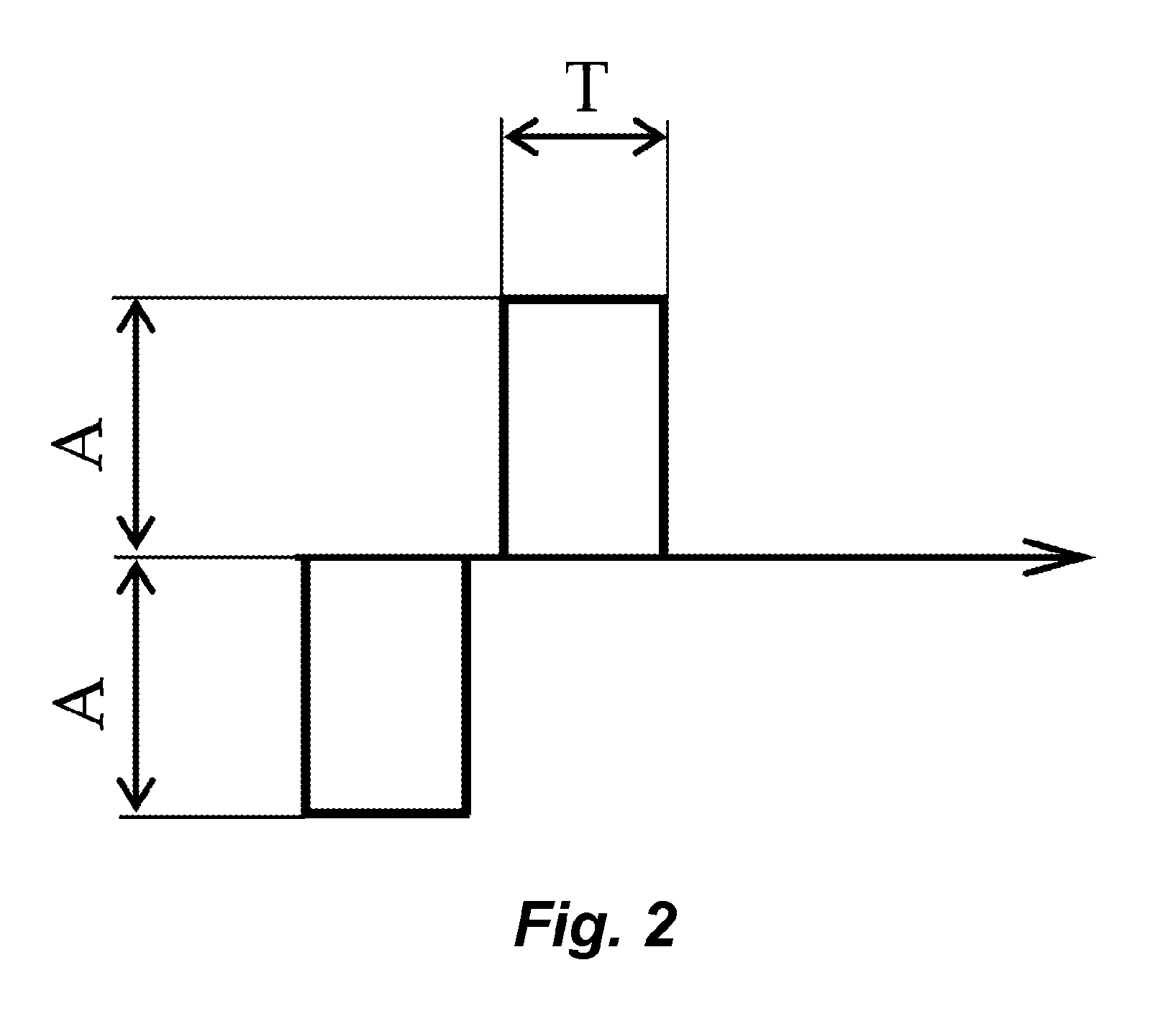Triphasic Pulses to Reduce Undesirable Side-Effects in Cochlear Implants
a cochlear implant and pulse technology, applied in the field of hearing implant systems, can solve the problems of short phase duration, limited current amplitude, and less electrode channel for coding, and achieve the effect of avoiding undesired somatic responses
- Summary
- Abstract
- Description
- Claims
- Application Information
AI Technical Summary
Benefits of technology
Problems solved by technology
Method used
Image
Examples
Embodiment Construction
[0032]In addition to the typical biphasic stimulation pulses, most modern cochlear implants are capable of generating symmetrical triphasic stimulation pulses. But biphasic rather than triphasic pulses conventionally are used for cochlear implant stimulation in a normal operation mode, i.e. when the patient's auditory nerve is stimulated in order to provide auditory sensation. (The situation is different for the non-hearing situation of measuring nerve responses to stimulation pulses where it is known that triphasic stimulation pulses may favourably reduce stimulation artifacts.) No one in the field has identified any particular advantage to using triphasic stimulation pulses rather than biphasic stimulation pulses. In addition, if the individual pulse phases (positive and negative) become too short (e.g. shorter than about 10 μs), then a triphasic stimulation pulse that splits the duration of one of the pulse phases may lead to an uncertain charge balance because of the limited tem...
PUM
 Login to View More
Login to View More Abstract
Description
Claims
Application Information
 Login to View More
Login to View More - R&D
- Intellectual Property
- Life Sciences
- Materials
- Tech Scout
- Unparalleled Data Quality
- Higher Quality Content
- 60% Fewer Hallucinations
Browse by: Latest US Patents, China's latest patents, Technical Efficacy Thesaurus, Application Domain, Technology Topic, Popular Technical Reports.
© 2025 PatSnap. All rights reserved.Legal|Privacy policy|Modern Slavery Act Transparency Statement|Sitemap|About US| Contact US: help@patsnap.com



